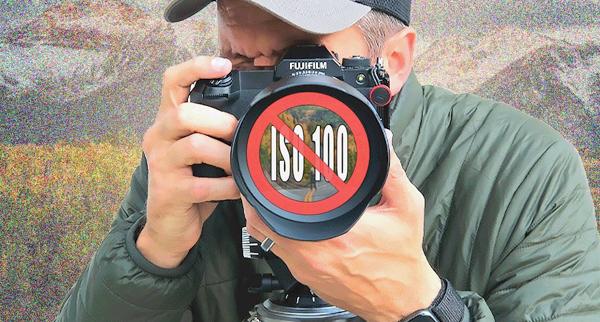Pros Use These ISO TRICKS that Novices Avoid (VIDEO)

Think back to when you were first getting started, and what you were told about ISO settings. If you’re like most of us, you were imbued with the notion that using ISO 100 (or lower) was the only way to obtain clean and noise-free images. Right?
You also likely learned that higher ISO settings were a sure way to kill the image quality of your work, with greater noise and other unpleasant characteristics. The goal of the video below is to break you free from this inconvenient “truth.”
Even though modern cameras offer much improved high ISO performance compared to those from just a few years ago, experienced photographers often ramp up the sensitivity setting for a number of other valid reasons. Mark Denney is a notable landscape pro who was a member of the “ISO 100 or Bust Clan” during his formative years. But once he escaped and was debriefed, “A whole world of photographic opportunities opened up for me.”

As Denney explains, “I was locked into ISO 100 for years,” thinking that higher settings should be considered a last resort for “emergencies.” Sound familiar? But as he explains here, there are a myriad of other problem that can be solved by selecting higher ISO settings.
In sharing his take on this common topic, Denney discusses why he frequently gets high instead of going low—even when shooting during the day in good light. One reason is the desire to use a specific shutter speed to achieve the exact effect he desires.
Denney discusses three specific scenarios in which he considers higher ISOs a must. The first has to do with photographing trees, which he does often in the Blue Ridge Mountains near his home. As he notes, unless it’s a windless day (which doesn’t occur often) it’s difficult to capture sharp shots with slow shutter speeds when leaves are in constant motion. Bumping up ISO, even to ISO 640, can immediately solve the problem.

Another scenario in which Denney opts to amp up ISO is when he’s photographing water. While some photographers intentionally use slow shutter speeds to create a dreamy look when engaged in this task, Denney says, “Whenever I see big crashing waves, I use fast shutter speeds to capture that dynamic ferocity.”
So what’s the third situation that calls for higher ISO settings? You’ll have to watch the video to see that. Suffice to say that this topic illustrates how conventional wisdom can be detrimental to your results.
There’s much more to see on Denney’s instructional YouTube channel, so be sure to pay a visit. We also encourage you to check out the earlier tutorial we posted, explaining how to shoot amazing macro photographs of snowflakes.
- Log in or register to post comments













































